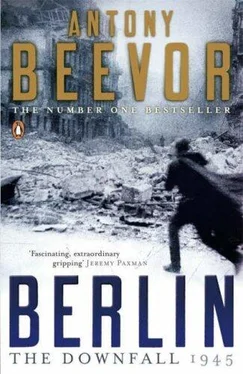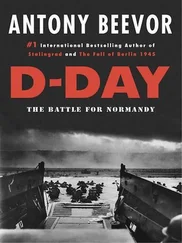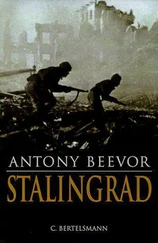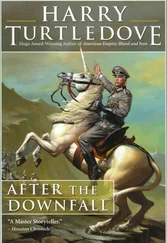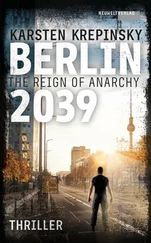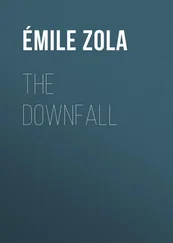If those January days were disastrous for the Wehrmacht, they were far more terrible for the several million civilians who had fled their homes in East Prussia, Silesia and Pomerania. Farming families who for centuries had survived the harshest of winters now realized with horror how vulnerable they were. They faced merciless weather, with homesteads burned and foodstocks looted or destroyed in the retreat. Few acknowledged, however, that this had recently been the fate of Polish, Russian and Ukrainian peasants at the hands of their own brothers, sons and fathers.
The ‘treks’ from the regions along the Baltic coast — East and West Prussia and Pomerania — headed for the Oder and Berlin. Those from further south — Silesia and the Wartheland — aimed for the Neisse, south of Berlin. The vast majority of the refugees were women and children, since almost all the remaining men had been drafted into the Volkssturm. The variety of transport ranged from handcarts and prams for those on foot to every sort of farm cart, pony trap and even the odd landau, exhumed from the stables of some schloss. There were hardly any motor vehicles because the Wehrmacht and the Nazi Party had requisitioned them already, as well as all fuel. Progress was pitifully slow, and not just because of the snow and ice. Columns kept halting because carts were overloaded and axles broke. Hay carts, filled with household objects, hams, kegs and jars of food, were turned into covered wagons with a crude superstructure and carpets draped over the outside. Mattresses inside provided some relief to heavily pregnant women and nursing mothers. On icy surfaces, undernourished horses found it hard work. Some carts were hauled by oxen whose unshod hooves were worn raw by the roads, leaving bloodstains in the snow. And when an animal died, as was all too often the case, there was seldom time to butcher it for food. Fear of the enemy drove the refugees on.
At night the columns were directed into wayside villages, where they were often allowed to camp in the barns and stables of manor houses. The owners would welcome in fellow aristocrats fleeing from East Prussia as if they were extra guests arriving for a shooting party. Near Stolp, in East Pomerania, Baron Jesko von Puttkamer slaughtered a pig to help feed hungry refugees on a trek. A ‘short-legged, pot-bellied’ local Nazi official turned up to warn him that slaughtering an animal without permission was ‘a serious offence’. The baron bellowed at him to get off his property, otherwise he would slaughter him too.
Those who had escaped from East Prussia in trains were no better off. On 20 January, a freight train overloaded with people pulled slowly into the station in Stolp. ‘Huddled shapes, rigid with cold, barely able to stand up any more and climb out; thin clothing, mostly in tatters, a few blankets over bowed shoulders; grey, hollow faces’. Nobody spoke. Stiff little bundles were removed from the cars and laid on the platform. They were children who had frozen to death. ‘Out of the silence came the cries of a mother who did not want to surrender what she had lost,’ recorded a woman witness. ‘Horror and panic overcame me. Never had I seen such misery. And behind this sight, a terrifying and powerful vision loomed up: we were these people; this was what was in store for us.’
The weather was about to get much worse a week later, with temperatures at night dropping from minus ten Celsius to minus thirty. Also another half a metre of snow fell in the last week of January, creating snowdrifts that were sometimes impassable even for tanks. Yet the panic-stricken migration increased. As Soviet forces headed for the Silesian capital of Breslau, which Hitler had designated a fortress to be defended to the last man and the last bullet, loudspeaker vans ordered civilians to leave the city as quickly as possible. Refugees were trampled to death in the rush for the trains. There was no question of evacuating the wounded or sick. They were given a grenade each to use on themselves and any Russians. Trains were not always the most certain means of transport. Journeys which usually took three hours ‘in normal times’, a report on the refugees noted, were taking twenty-one hours.
Eva Braun’s sister Use, who lived in Breslau, was one of those to flee by train. An official car collected her from the Schlesischer Bahnhof in Berlin on the morning of 21 January and brought her to the Adlon Hotel, where Eva was living. They had dinner together that evening in the library of the Reich Chancellery. Eva, who had no inkling of the scale of the disaster in the east, chatted as though her sister could return to Breslau after a short holiday. Use could not restrain herself. She described the refugees fleeing through the snow out of fear of the enemy. She was so angry, she told Eva that Hitler was dragging the whole country into an abyss. Eva was deeply shocked and furious. How could she say such things about the Führer, who had been so generous and even offered to put her up at the Berghof? She deserved to be put against a wall and shot.
By 29 January the Nazi authorities calculated that ‘around 4 million people from the evacuated areas’ were heading for the centre of the Reich. This was clearly an underestimate. The figure rose to 7 million within a fortnight and to 8.35 million by 19 February. At the end of January, between 40,000 and 50,000 refugees were arriving in Berlin each day, mainly by train. The capital of the Reich did not welcome its victims. ‘The Friedrichstrasse Bahnhof has become the transit point of Germany’s fate,’ an eyewitness wrote. ‘Each new train that comes in unloads a mass of amorphous suffering on to the platform.’ In their misery, they may not have noticed the sign there which proclaimed, ‘Dogs and Jews are not allowed to use the escalator!’ Soon energetic measures were taken by the German Red Cross to push refugees on from the Anhalter Bahnhof as quickly as possible, or to force trains to go round Berlin. The authorities were afraid of ‘infectious diseases such as typhus’ and an epidemic in the capital. Other illnesses that they feared the refugees would spread were dysentery, paratyphus, diphtheria and scarlet fever.
A good example of the chaos was shown by the figures for Danzig. On 8 February it was estimated that Danzig had 35,000–40,000 refugees, but should expect 400,000. Two days later it was decided that the figure of 400,000 had in fact already been reached. Having made no preparations for the disaster which Hitler had refused to acknowledge, the Nazi authorities now had to be seen to be making up for lost time if they were to retain any authority. They made a great show of using Junkers 88s from the Luftwaffe to drop supplies to snowbound and starving columns, but privately complained that it was ‘a terrible strain’ on their fuel reserves.
Food depots were set up for refugees round Danzig, but these were soon looted by German soldiers on short rations. Yet the area in most urgent need of help was still East Prussia, where the first ship to evacuate refugees did not arrive until 27 January, fourteen days after Chernyakhovsky’s attack. Other vessels with supplies of bread and condensed milk for civilians did not leave until early February. Inevitably, a proportion of the relief never got through. An aircraft with 2,000 tins of condensed milk was shot down in one of the first attempts to fly in supplies.
Chernyakhovsky’s and Rokossovsky’s two groups of armies had forced the remnants of the three German armies defending East Prussia into pockets with their backs to the sea. Rokossovsky’s left-flank armies had captured the Teutonic Knights’ fortress towns on the east bank of the Vistula and Marienburg on the Nogat. This forced the German Second Army back into the Vistula estuary, but it still retained the Frische Nehrung sandbar. And with a third of a metre of ice on the Frisches Haff lagoon, refugees could still cross by foot from the mainland and then on to Danzig. Rokossovsky’s right flank meanwhile had to redeploy rapidly to face a German attempt to break out to the west.
Читать дальше
